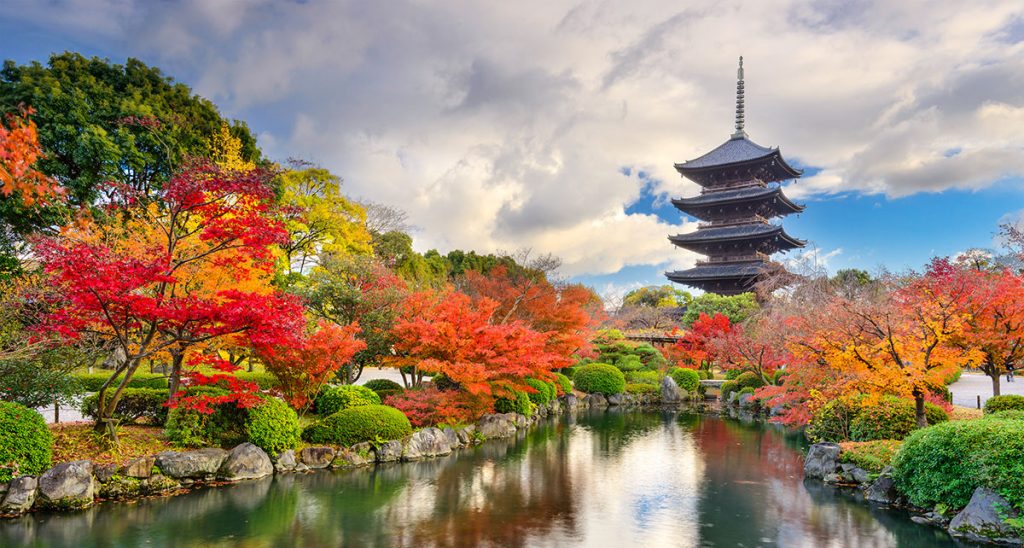Throughout the year, the balance between day and night is constantly changing. But as we progress through the seasons, twice a year we will encounter points where equilibrium is reached between the two; both day and night will be equal.
For those of us in the Northern Hemisphere, the second ‘day-and-night equilibrium’ of the year is known as the Autumn Equinox. It occurs between the 22 and 23 of September and indicates the astronomical arrival of autumn. In Japan, this event is marked by the public holiday ‘Autumnal Equinox Day, also known in Japanese as Shubun no Hi (秋分の日).

When Exactly is Japan’s Autumn Equinox?
The Autumn Equinox occurs when the sun passes over the equator from the Northern Hemisphere to the Southern Hemisphere.
What is an ‘Equinox’
The word equinox comes from latin, meaning ‘equal night’. Although contrary to popular belief, the lengths of day and night are not exactly equal.
The first equinox of the year occurs in March and is called the Vernal Equinox, which indicates the end of winter and the start of spring. Japan also celebrates the vernal equinox with a national holiday, Vernal Equinox Day.
How Did the Autumn Equinox Holiday Start?
Japan, along with other nations, has celebrated the Autumnal Equinox for centuries and it has been a national holiday since the Meiji period. Yet, the well-established roots of this holiday – originally called Shuki Koreisai – are believed to stem from Shintoism and Buddhism.
In addition to the seasonal significance of the Autumnal Equinox, this holiday also paid tribute to the spirits of deceased relatives and Japanese Emperors. However, after WWII the government separated religion from the state through the post-war constitution and the day was rebranded as a non-religious holiday.
Are there Traditional Ways to Celebrate?
Yes. Despite the rebranding of the holiday, the religious significance of the equinox still remains. Following both the autumnal and vernal equinoxes is the Buddhist holiday Ohigan, which literally means “the other shore”. This “other shore” is linked to enlightenment, and thus, this holiday is connected to six practices (paramitas) that are believed to lead to it: generosity, morality, perseverance, concentration, meditation and wisdom.
During O-higan, people will reconnect with their families to tend to the graves of ancestors and visit shrines and temples. People also celebrate the good weather and autumn harvest by enjoying outdoor activities and eating Shibun no Hi snacks such as botomachi – a ball of sweet rice in azuki paste.
How You Can Commemorate the Autumnal Equinox in/around Tokyo
Perhaps the best way to spend this time is to express gratitude to loved ones who have passed over. As per the tradition, if you have ancestors in Japan you could tend to their gravestones. If not, you could ask friends if they would like any support from their families.
- Join your friends and search for higan-bana (彼岸花) – a type of flower that blooms around this time.
- Look for temple festivals near your home. Or visit one of the quieter temples such as Yuten-ji, Kotoku-ji or Zojo-ji.
- Observe the last of summer by taking a trip to a peaceful garden such as Higo-Hosokawa, San-keien (Yokohama) or Koishikawa Korakuen.
- Pay tribute to the six Mahayana Buddhist paramitas: give more to someone than you need to (generosity), start reading the book that’s been sitting on your shelf for too long (wisdom), and meditate for 10-minutes at one of the temples above (meditation), tell someone the truth about something bothering you or listen to someone who needs to talk (morality), spend time on a personal project (perseverance), or just turn off your phone for a while and give all of your attention to something or someone you love (concentration).
What’s Next After Autumnal Equinox?
While Japan is known for its cherry blossoms in the spring, autumn foliage is an equally beautiful sight — but, sadly, not as well known. Momijigari (紅葉狩り), which literally means “red leaf hunting” or “maple leaf hunting”, is a custom of admiring the changing colors of leaves to vibrant red, brown, yellow and orange during fall in Japan. It has been practiced for centuries by the Japanese people, drawing inspiration for artists and poets.
Check out the best spots for Momiji viewing in Japan here.